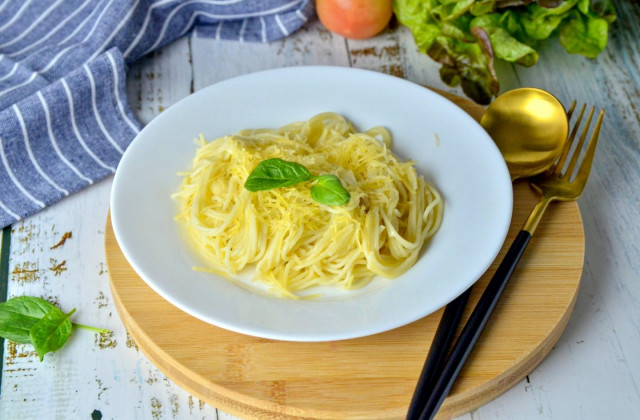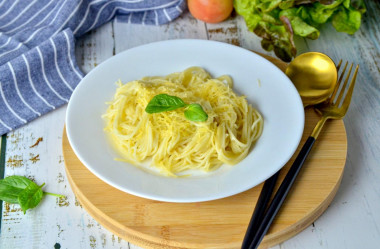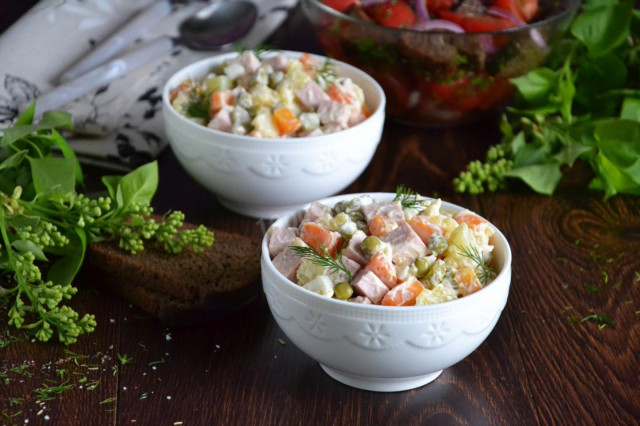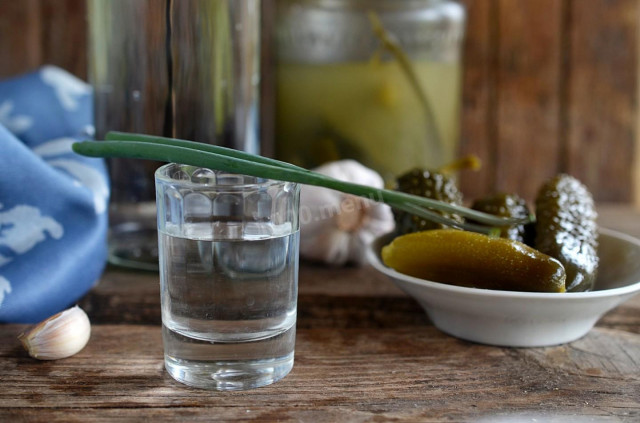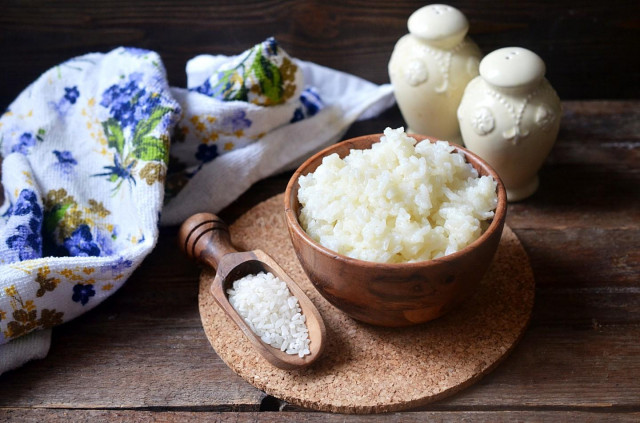Composition / ingredients
Step-by-step cooking
Step 1:
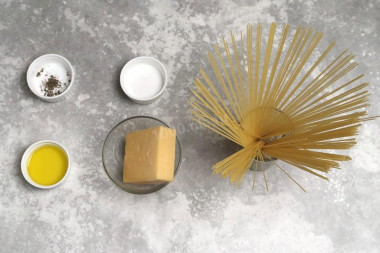
How to make pasta with cheese? Prepare the pasta products. I took spaghetti, and in general, any kind of pasta will do. Choose any hard cheese, the main thing is that you like it to taste.
Step 2:

Grate the cheese on a fine grater, so it will melt faster.
Step 3:
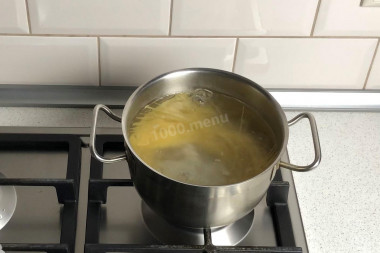
Put the water in a large saucepan on the fire. Pasta is cooked at the rate of one liter of water for every 100 grams. Bring to a boil. Add salt. Salt should be slightly less than with conventional cooking. The cheese is salty enough, it will add the missing flavor. Throw the pasta into the water. Cook them for a minute less than the time indicated on the package. Then throw them into a colander, after pouring out a glass of water in which they were cooked.
Step 4:
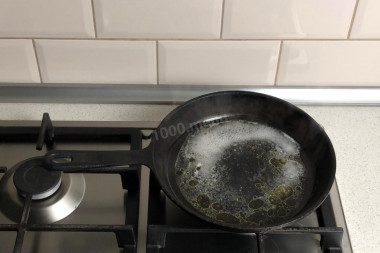
Heat olive oil in a frying pan, add freshly ground pepper. Let the oil warm up a little with the pepper, it will give it its flavor. Pour in half a glass of broth from the pasta. Bring to a boil.
Step 5:
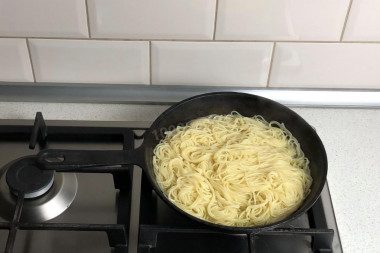
Throw the pasta into the pan, mix it with oil.
Step 6:
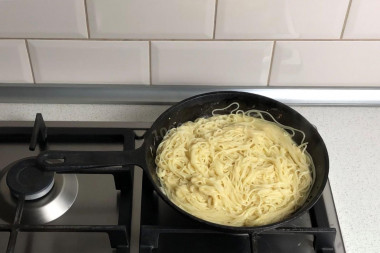
Pour the grated cheese into the paste, leaving some for serving. Stir thoroughly, achieving a homogeneous creamy sauce. If necessary, add the remaining broth. Keep the macaroni and cheese on the fire for about 2 minutes. Then spread on plates and serve immediately, sprinkled with the remaining cheese on top.
We really liked this method of cooking pasta with cheese. I used to just boil it, add butter and sprinkle with cheese. It turned out delicious, but usually.
Pasta cooked according to this recipe turns out to be really all in cream sauce, and this despite the fact that cream is not added to them. Each macaroni is enveloped in melted cheese and an explosion of taste is obtained! Plus pepper gives its sharp note. Although you can do without it, especially if you cook for children.
The main role in pasta dishes is played by choosing the right pasta. The most delicious is from durum wheat. It does not boil during cooking, has useful properties and the best taste qualities. They say they don't get fat from it)
When cooking, always follow the instructions on the pasta packaging.
Caloric content of the products possible in the composition of the dish
- Pasta, premium, fortified - 337 kcal/100g
- Pasta, premium, dairy - 309 kcal/100g
- Pasta, premium grade, egg - 342 kcal/100g
- Pasta made from flour of the 1st grade - 333 kcal/100g
- Pasta made of flour in / with - 338 kcal/100g
- Boiled pasta - 135 kcal/100g
- Pasta - 338 kcal/100g
- Dutch cheese - 352 kcal/100g
- Swiss cheese - 335 kcal/100g
- Russian cheese - 366 kcal/100g
- Kostroma cheese - 345 kcal/100g
- Yaroslavsky cheese - 361 kcal/100g
- Altai cheese 50% fat content - 356 kcal/100g
- Soviet cheese - 400 kcal/100g
- Cheese "steppe" - 362 kcal/100g
- Uglich cheese - 347 kcal/100g
- Poshekhonsky cheese - 350 kcal/100g
- Lambert cheese - 377 kcal/100g
- Appnzeller cheese with 50% fat content - 400 kcal/100g
- Chester cheese with 50% fat content - 363 kcal/100g
- Edamer cheese with 40% fat content - 340 kcal/100g
- Cheese with mushrooms of 50% fat content - 395 kcal/100g
- Emmental cheese with 45% fat content - 420 kcal/100g
- Gouda cheese with 45% fat content - 356 kcal/100g
- Aiadeus cheese - 364 kcal/100g
- Dom blanc cheese (semi-hard) - 360 kcal/100g
- Lo spalmino cheese - 61 kcal/100g
- Cheese "etorki" (sheep, hard) - 401 kcal/100g
- White cheese - 100 kcal/100g
- Fat yellow cheese - 260 kcal/100g
- Altai cheese - 355 kcal/100g
- Kaunas cheese - 355 kcal/100g
- Latvian cheese - 316 kcal/100g
- Limburger cheese - 327 kcal/100g
- Lithuanian cheese - 250 kcal/100g
- Lake cheese - 350 kcal/100g
- Gruyere cheese - 396 kcal/100g
- Ground black pepper - 255 kcal/100g
- Salt - 0 kcal/100g
- Olive oil - 913 kcal/100g

